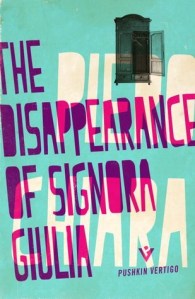I still think about Piero Chiara’s The Disappearance of Signor Guilia, so I was delighted to see a translation of The Bishop’s Bedroom. The New York Times Book Review compared the book to a Patricia Highsmith novel, but I basically ignored and forgot that comment. But it’s a well deserved comparison, and I wasn’t too far into the novel when Highsmith popped into my head. This is a suspense/crime novel set against post war Italy. The dreariness and deprivation of war is over, and those who have survived, at least most of the characters in the book, are approaching life with new attitudes. There’s a sense that leisure and pleasure are to be valued above all else. The war is in the past, a shadow that still can be seen with a backward glance.

It’s 1946, and WWII has ended, yet the ripples of the conflict still extend in Italian society in spite of the book’s emphasis on relaxation, leisure, and sun. The unnamed narrator, a man in his 30s who has recently returned from Switzerland, has a sailboat and he spends his life sailing around putting off the day he must pick up responsibilities again. The narrator is a consummate bachelor (lothario), and with a knack with women, some of them married, he picks one up, takes her for a sail and then drops her back home. There are no commitments, no broken hearts, and no demands.
One day he sails into the port of Oggebbio on Lake Maggiore and a local man named Orimbelli, who reminded me of an oily Peter Lorre, strikes up a conversation. The narrator finds that he can’t quite read his new acquaintance:
He smiled often, sometimes for no reason, as if to seem obliging, but with the world weariness of a gentleman, or a man who’s lived a lot. His voice was somewhat nasal and yet not the least bit affected. He wore a gold ring on his little finger, and a fancy wristwatch, the kind that tells the day and month as well as the hour. It was immediately obvious that he was someone of a certain refinement, but it wasn’t easy to pin down his class. Clearly, he wasn’t a businessman or industrialist. Perhaps a doctor or notary, or just a rich idler who had established himself by the lake before the war, someone who’d stuck his head out after the army had gone by, to see which way the wind was blowing.
One thing leads to another and Orimbelli, who tells his story of how he spent some of the war in Ethiopia, followed by a stay in Naples for health reasons, invites the narrator to his villa for dinner. Orimbelli lives at the Villa Cleofe with his older “very thin, schoolmarmish” wife and his sister-in-law, the lush widow Mathilde. While the villa is gorgeous, the atmosphere around the dinner table is suffocating, so it seems no surprise that Orimbelli should want to lighten the domestic atmosphere with the diversion of a guest. And neither is it too surprising that Orimbelli expresses an interest in sailing away with the narrator.
Over time, the narrator and Orimbelli, who connect over the pursuit of women*, make a number of sailing excursions together with the narrator sleazily picking up various women for himself and Orimbelli. If the idea is that Orimbelli needs to escape from his wife’s scrutiny for a while, then Orimbelli, once off leash, knows no restraint. Orimbelli has the annoying habit of shamelessly poaching the narrator’s women, and in spite of the fact that he’s not particularly attractive, he’s remarkably successful with women, perhaps because he’s so persistent.
While the story is set mostly in sun-filled days spent on the water, there’s a dark thread which runs through the plot. Is Orimbelli just the overweight, harmless married man he appears, or is there something far more sinister afoot? After a few incidents, the narrator, who calmly observes Orimbelli, decides he’s a “well-mannered monster, a wolf in sheep’s clothing,” but even after that recognition, Orimbelli’s deviousness still catches the narrator off guard.
The Bishop’s Bedroom, incidentally, the room in which the narrator stays in at the Villa Cleofe is a lavish red and gold bedroom–a creepy shrine like room with a morbid atmosphere.
Soon the sun would flood the bishop’s bedroom, rendering it violet rather than red in the first light, and transforming it into a first-class mortuary with its canopy, the altar-like chest of drawers, the walnut wardrobe with large panels. the prayer stool and crucifix between two purple festoons.
*It’s possible to say the two men also connect over sailing, but IMO, the boat is a means to an end.
translated by Jill Foulston
Review copy










You must be logged in to post a comment.